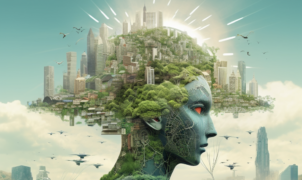Creating a complete article involves a multifaceted process that requires planning, research, writing, editing, and publishing. Like any process, it has both positive and negative aspects, which are important to consider for producing high-quality content. Here’s a guide to content creation, with an emphasis on its strengths and challenges.

Content creation word cloud concept on grey background.
1. Understanding the Target Audience
- Positive Aspect: Content Creation Tailoring content to a specific audience ensures that the material is relevant, increasing engagement and reader satisfaction. It can help establish a loyal audience base.
- Negative Aspect: Content Creation If the target audience is not well-defined or understood, the content may fail to connect with readers, leading to low engagement and a missed opportunity to resonate with potential audiences.
2. Topic Research and Selection
- Positive Aspect: Content Creation Proper research ensures that the content is well-informed, credible, and adds value to readers. Researching trending topics can also help the content gain visibility.
- Negative Aspect: Excessive time spent on research can delay content production. Additionally, over-researching may lead to information overload, where the writer becomes overwhelmed and struggles to organize key points effectively.
3. Planning and Structuring

- Positive Aspect: A clear structure helps in organizing thoughts, ensuring logical flow, and making the content easy to follow. Structured articles are often more effective in communicating complex ideas.
- Negative Aspect: Over-planning can stifle creativity, making the content feel rigid or overly formal. It may also consume too much time, leaving less room for actual writing and creativity.
4. Writing the Article
- Positive Aspect: Writing allows creativity and personal expression to flourish, letting the writer craft messages that resonate with readers. Engaging writing can captivate audiences and increase retention.
- Negative Aspect: Writing can be time-consuming, especially if the writer experiences writer’s block or struggles with organizing ideas. Additionally, poorly written content can confuse readers or fail to convey the intended message.
5. Editing and Proofreading
- Positive Aspect: Content Creation Editing enhances the clarity, readability, and overall quality of the content. Catching grammar mistakes and improving sentence structure makes the article more professional and polished.
- Negative Aspect: Constant editing can lead to perfectionism, which might prevent timely publishing. It can also cause frustration if the editing process feels endless or if repeated revisions strip the content of its originality.
6. SEO Optimization

- Positive Aspect: Content Creation Search Engine Optimization (SEO) increases the visibility of an article, driving organic traffic and ensuring it reaches the intended audience. Proper SEO also enhances the article’s long-term discoverability.
- Negative Aspect: Over-optimization can make the content feel unnatural, with keyword stuffing or awkward phrasing. Prioritizing SEO over quality may alienate readers and reduce engagement.
7. Multimedia Integration
- Positive Aspect: Content Creation Integrating visuals, videos, and infographics enriches the content, making it more engaging and accessible to diverse audiences. Multimedia can simplify complex ideas and make articles more visually appealing.
- Negative Aspect: Creating or sourcing high-quality multimedia content can be expensive and time-consuming. Additionally, poor integration of multimedia (e.g., low-quality images or irrelevant videos) can detract from the article’s professionalism.
8. Publishing
- Positive Aspect: Content Creation Publishing your article means sharing it with the world, providing the opportunity for readers to engage with and benefit from the content. A well-published article can build brand authority or personal reputation.
- Negative Aspect: Content Creation If publishing is rushed, it can lead to mistakes such as formatting errors, broken links, or other technical issues that affect the user experience. Improper timing or platforms may also limit the article’s reach.
9. Promotion
- Positive Aspect: Content Creation Promoting the article through social media, newsletters, and influencer collaborations can significantly boost its reach and engagement. Effective promotion strategies help your article gain visibility and credibility.
- Negative Aspect: Content Creation Over-promotion or aggressive marketing tactics may turn off potential readers. Misjudging the right platform or audience for promotion can result in wasted effort with minimal returns on investment.
10. Monitoring and Analytics
- Positive Aspect: Content Creation Analytics tools provide valuable insights into the article’s performance, helping creators understand what worked well and what didn’t. This data-driven approach allows for continuous improvement and content optimization.
- Negative Aspect: Content CreationObsessing over metrics, such as views and shares, can be demoralizing if the content doesn’t perform as expected. Focusing too much on analytics may also divert attention from creating meaningful and high-quality content.
Positive Aspects of Content Creation:
- Creative Expression: Content creation offers a platform for expressing ideas, sharing knowledge, and telling stories in unique ways.
- Engagement and Influence: Well-crafted content has the power to engage audiences, foster discussions, and influence opinions.
- Long-Term Value: Quality articles, especially those that are SEO-optimized, can generate traffic and value long after they are published.
- Brand Building: Consistently producing relevant and informative content helps in building authority and trust with an audience or customer base.
- Learning Opportunity: The research and writing process broadens the writer’s own knowledge on the topic, often leading to personal growth and development.
Negative Aspects of Content Creation:
- Time-Consuming: Content Creation Crafting a well-researched and polished article can take a significant amount of time, especially when balancing other tasks.
- Uncertainty of Results: Content Creation Even after investing time and effort, there’s no guarantee the article will resonate with the audience or perform well in search rankings.
- Creative Fatigue: Content Creation Regular content creation can lead to burnout, particularly if the creator is constantly under pressure to produce new material.
- Over-Saturation: In highly competitive niches, even high-quality content can get lost in the sea of similar articles, making it difficult to stand out.
- Technical Issues: Content Creation Mastering Content Creation: A Comprehensive Guide</span><h4>Description</h4><span>Discover the essential steps in content creation, from planning to publishing, to enhance your writing skills and reach your audience.</span> Problems like slow page load times, broken links, or unresponsive media can hurt user experience and SEO rankings.
Conclusion
Content creation is a powerful tool for communication, engagement, and growth, but it also presents challenges that require thoughtful navigation. By balancing creativity with strategy and being mindful of both positive and negative aspects, creators can produce impactful articles that benefit their audiences while also achieving their own goals.























